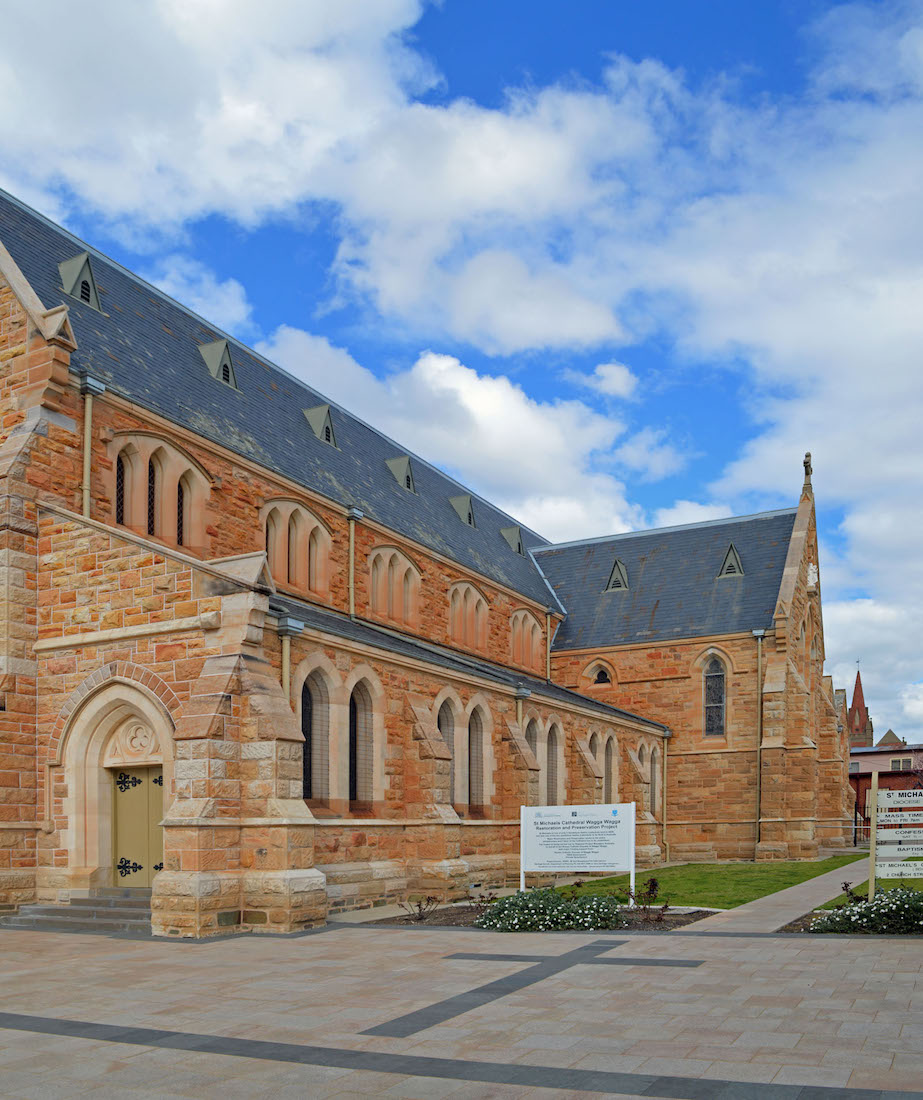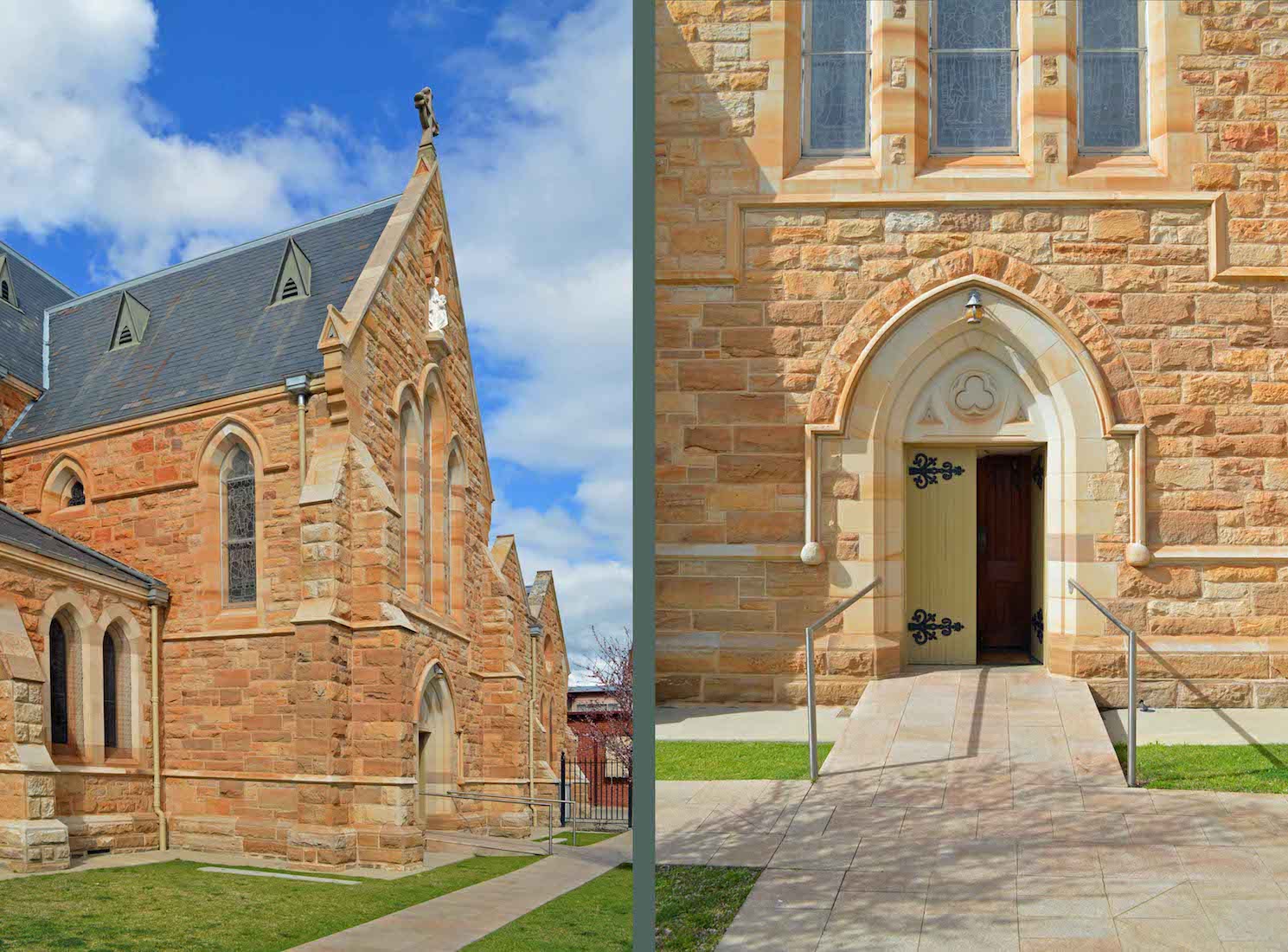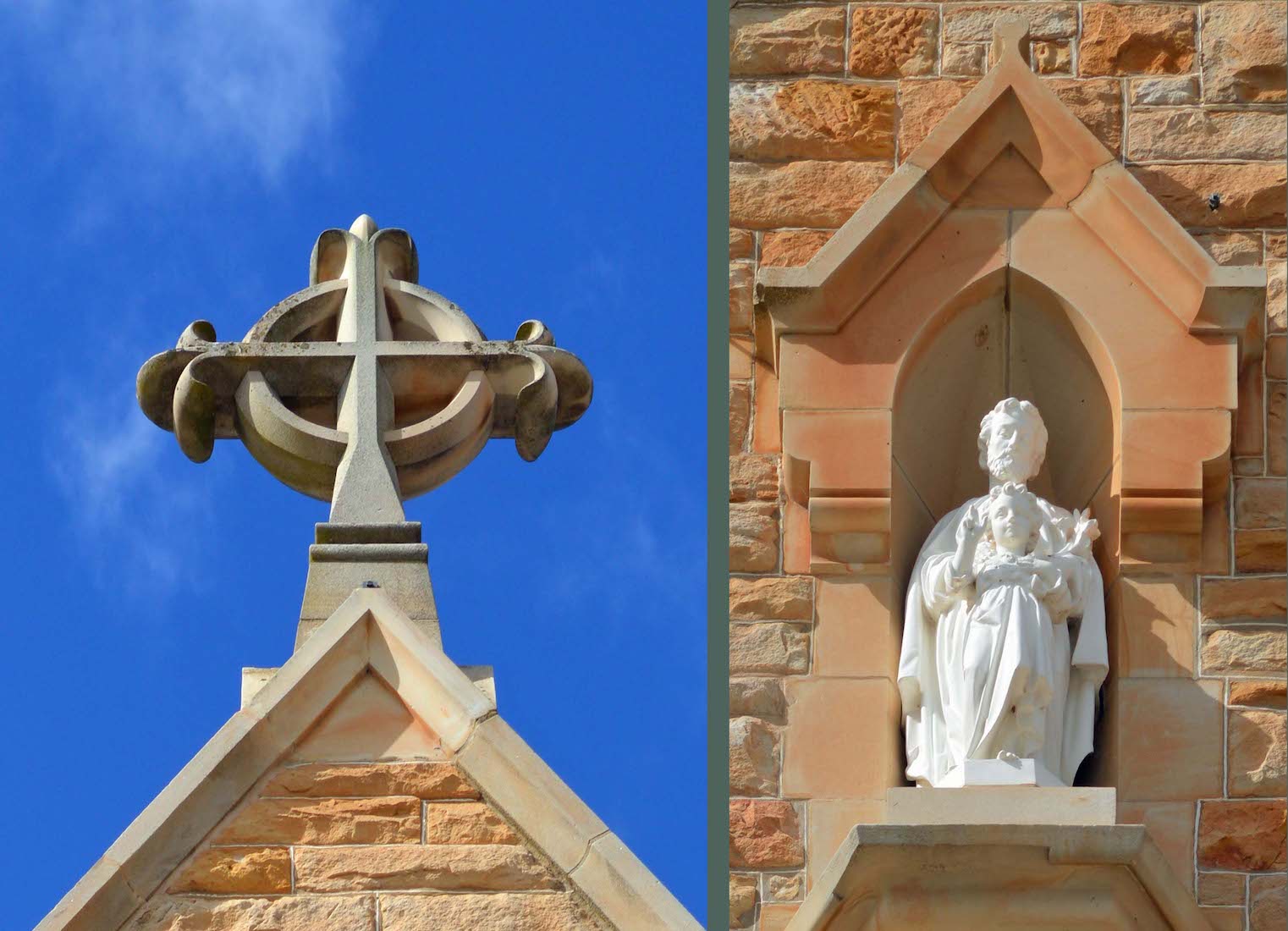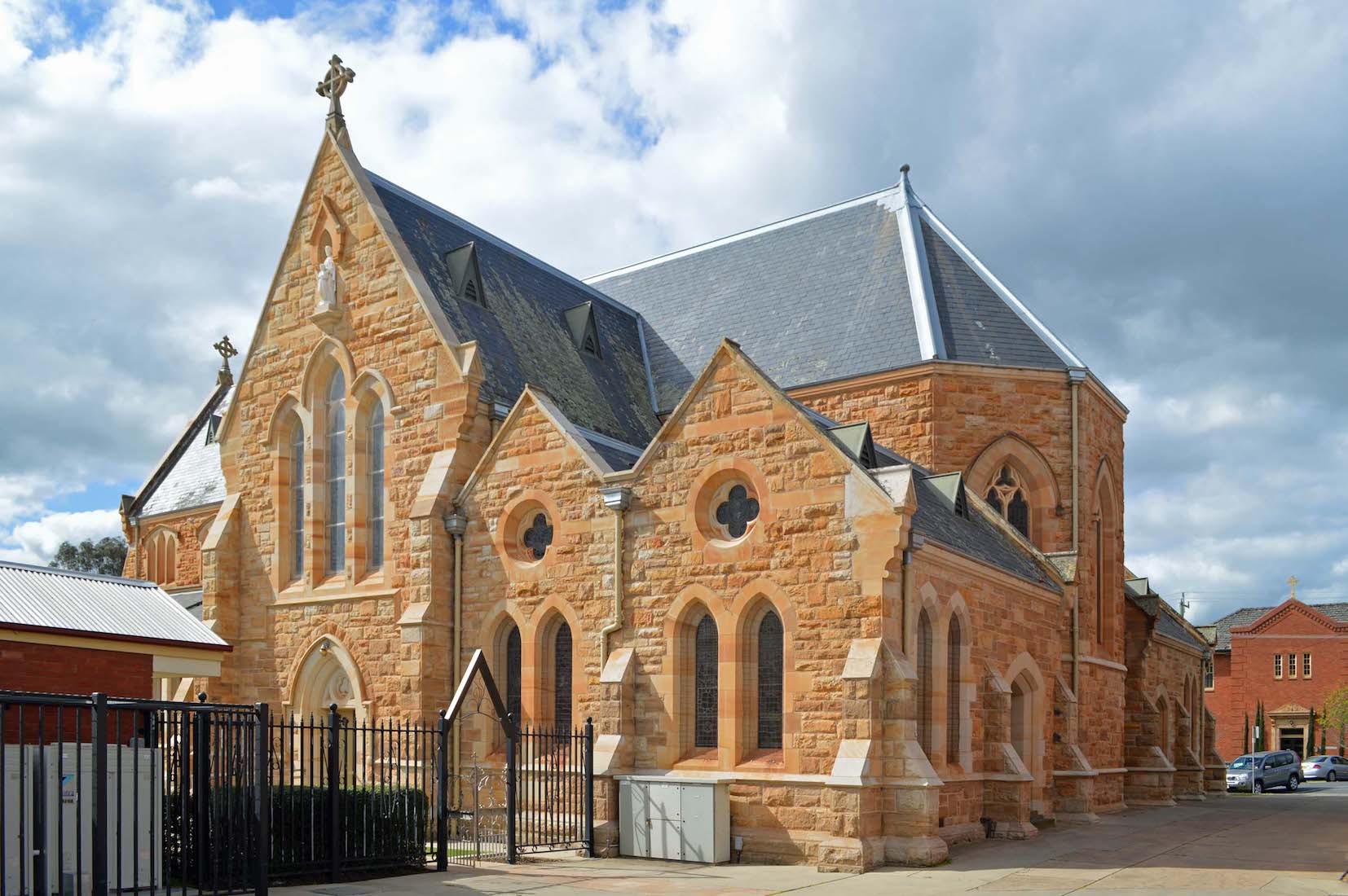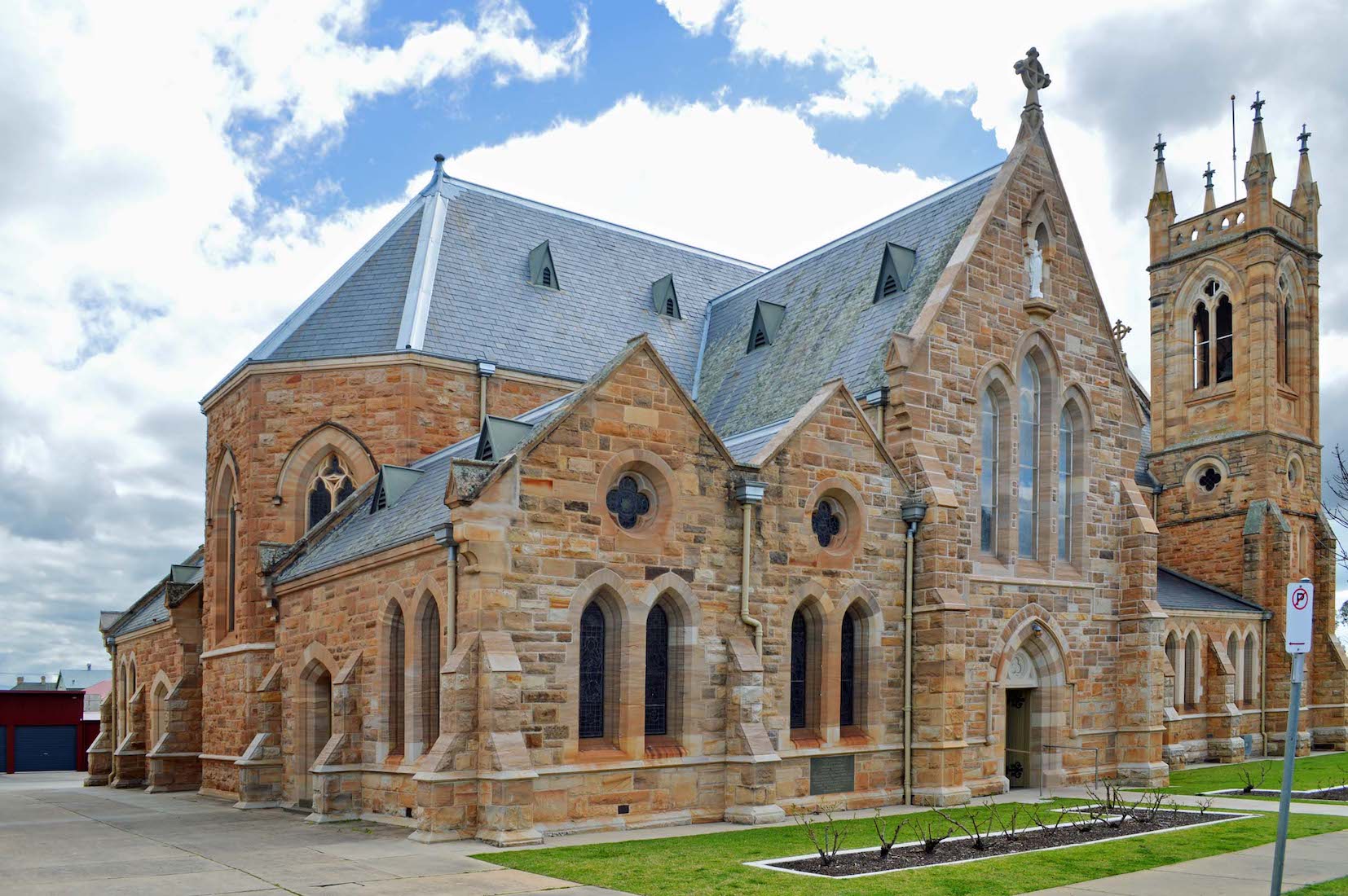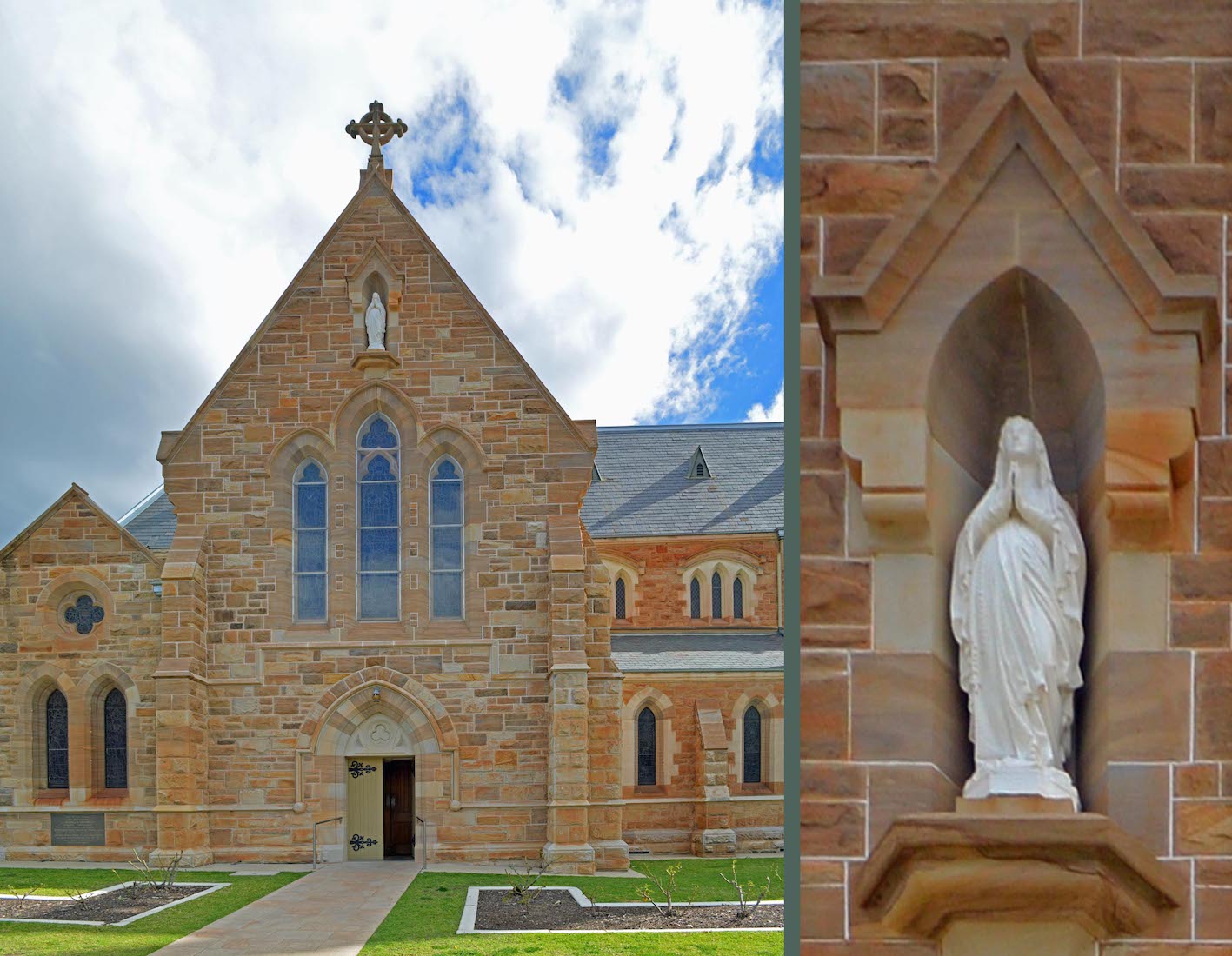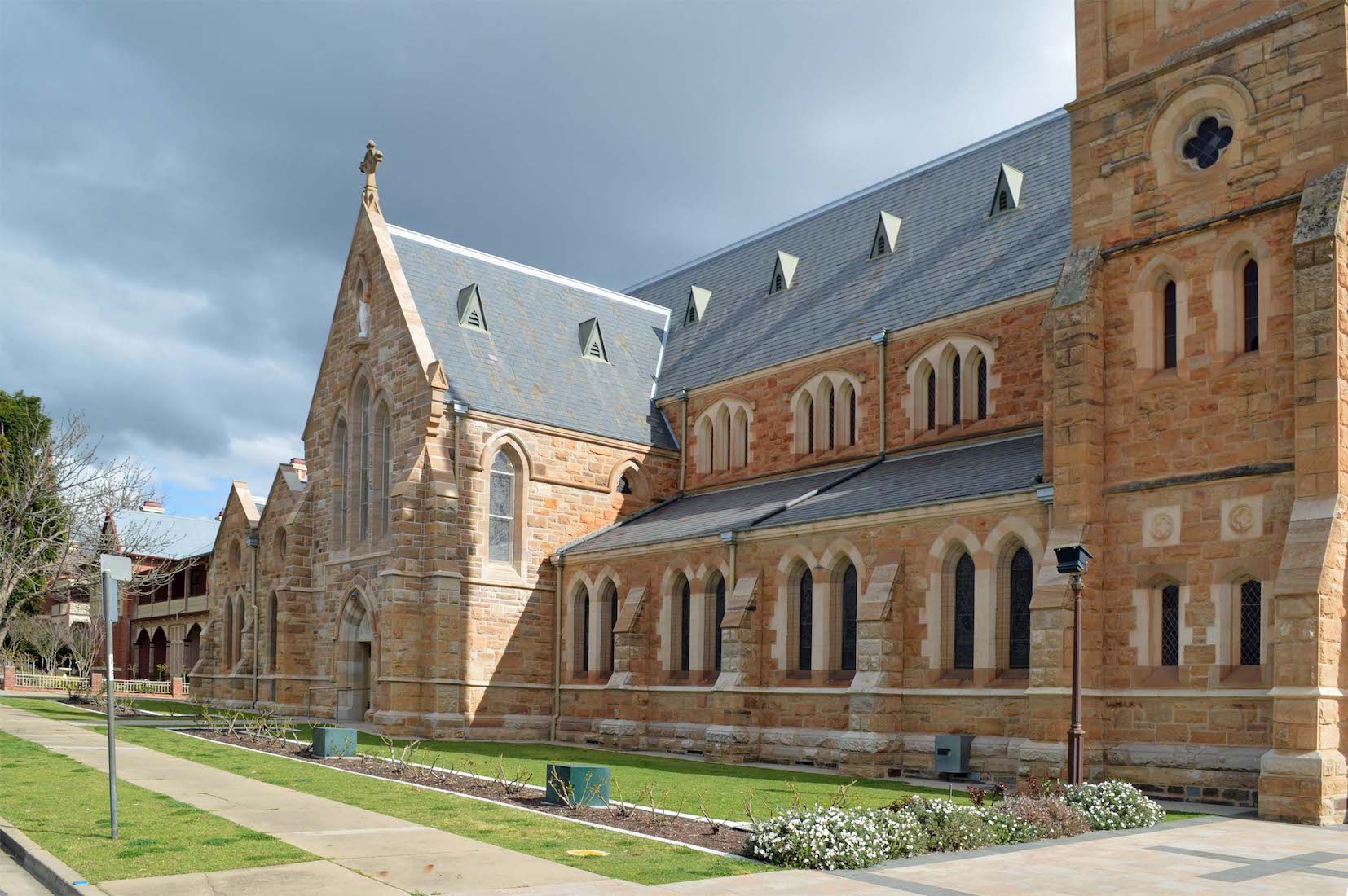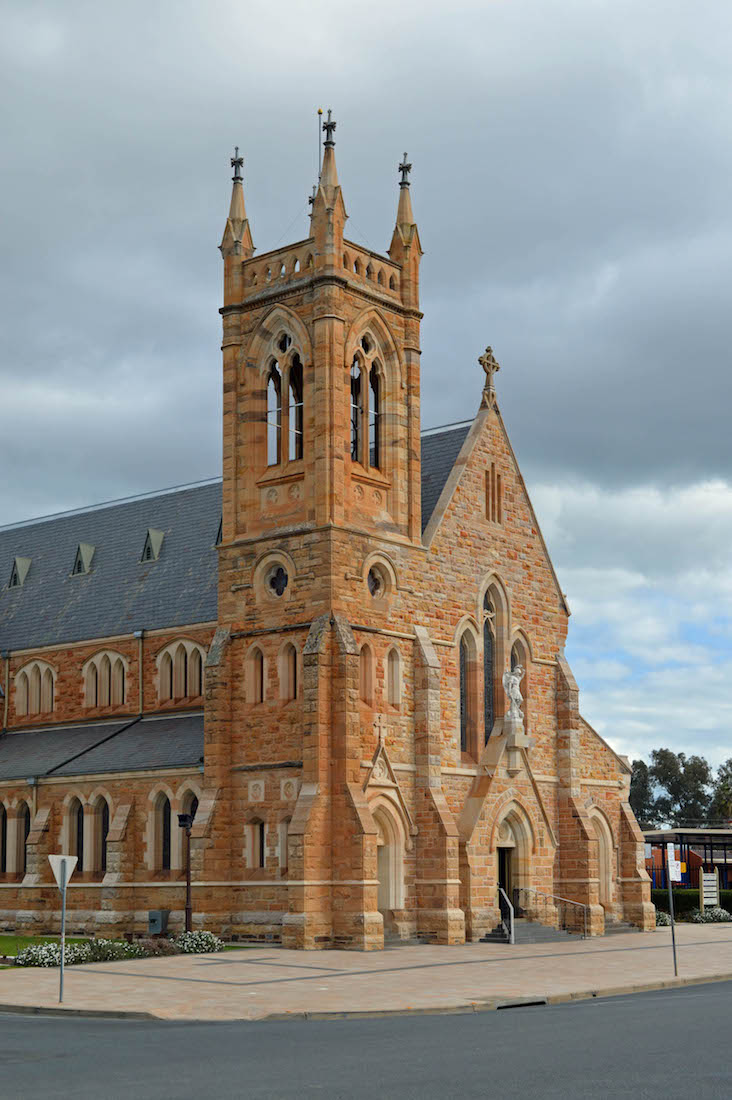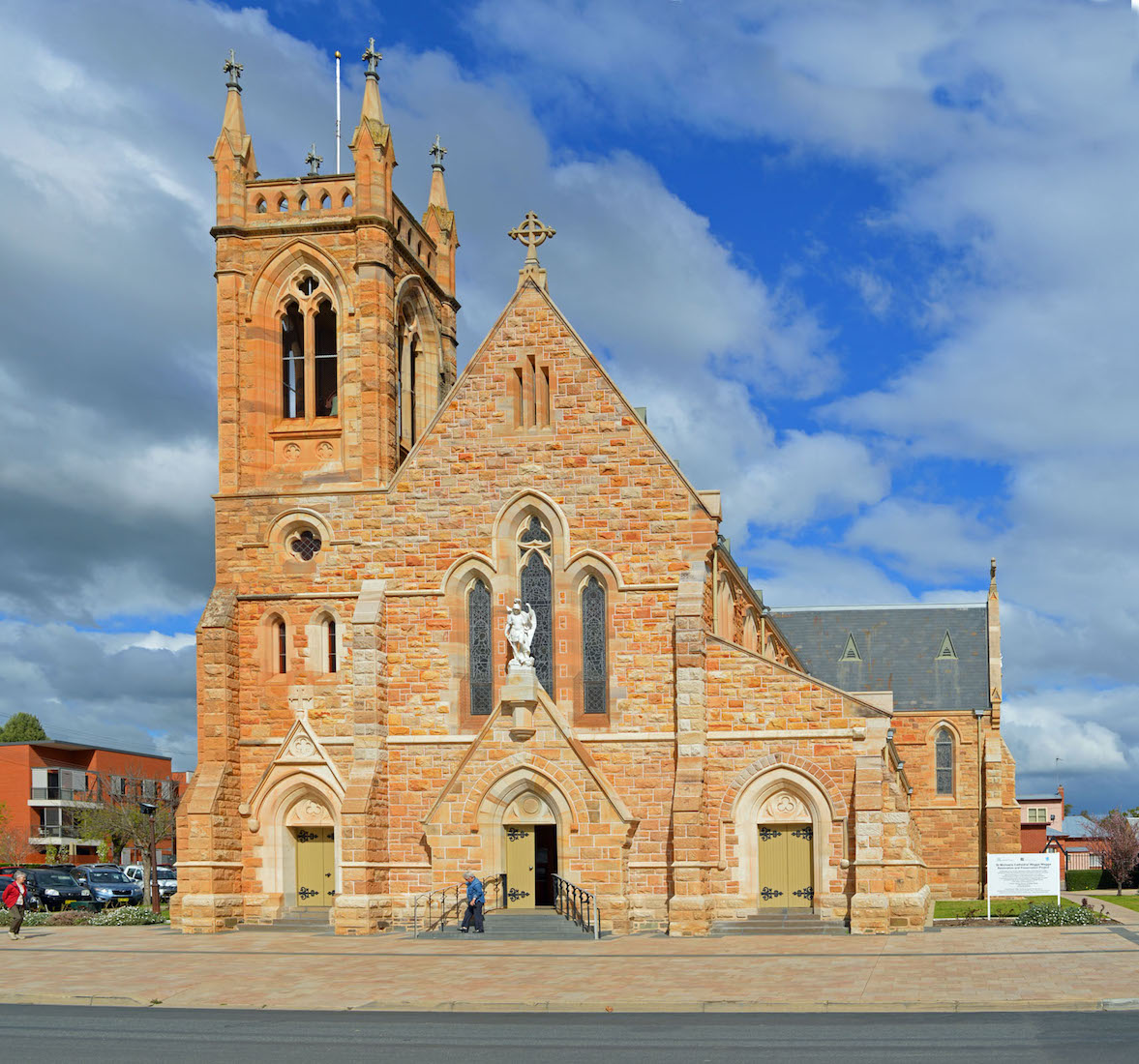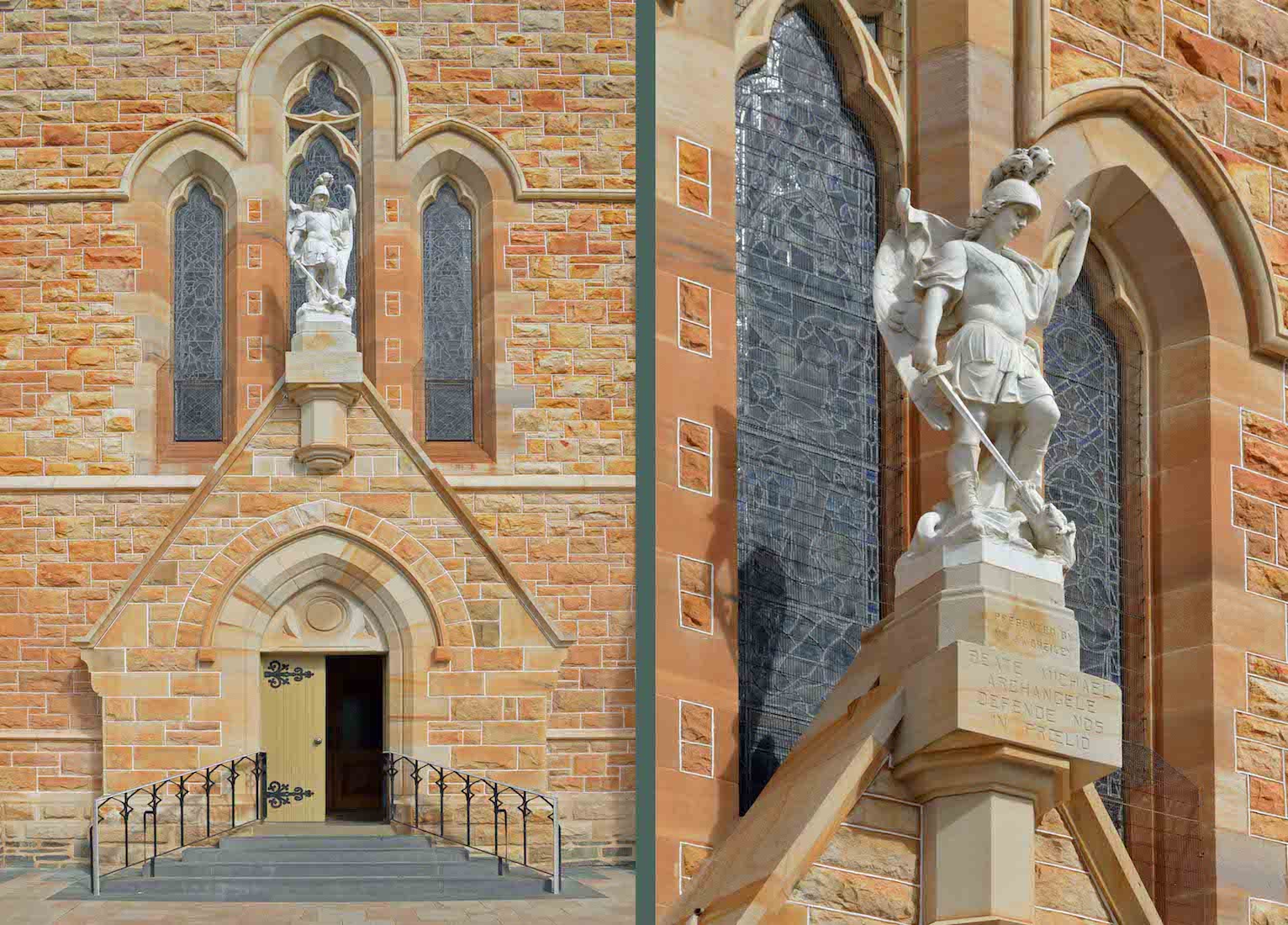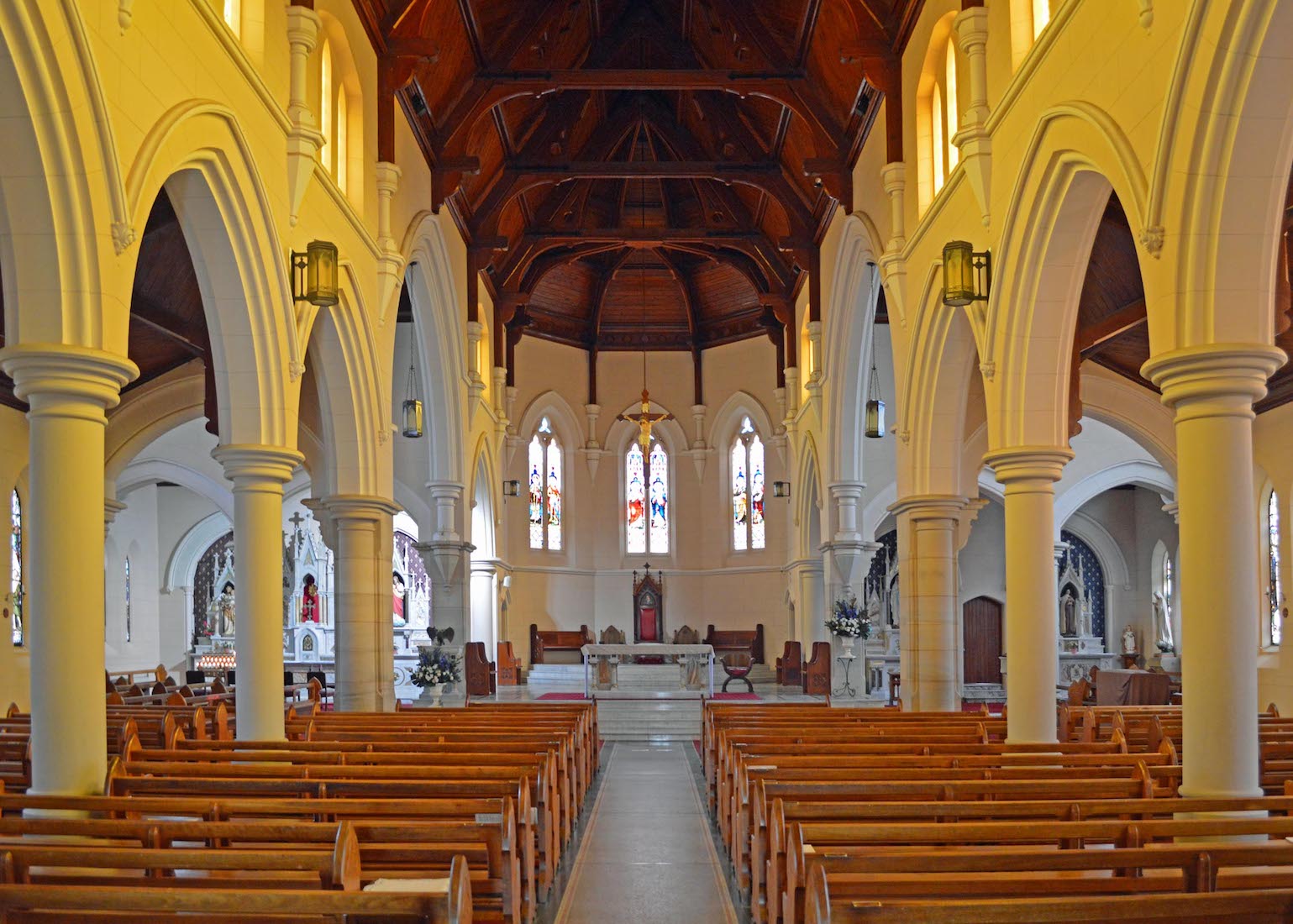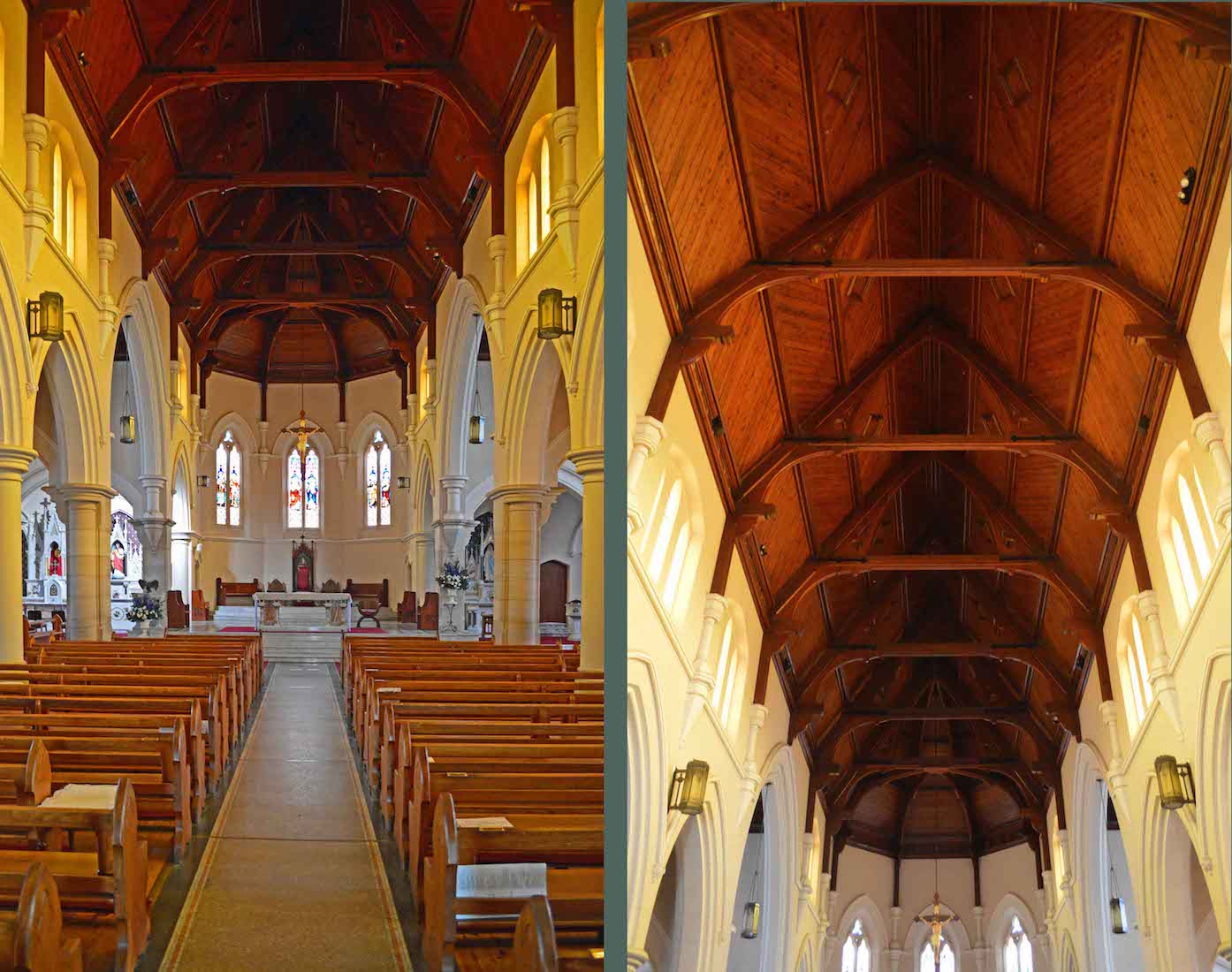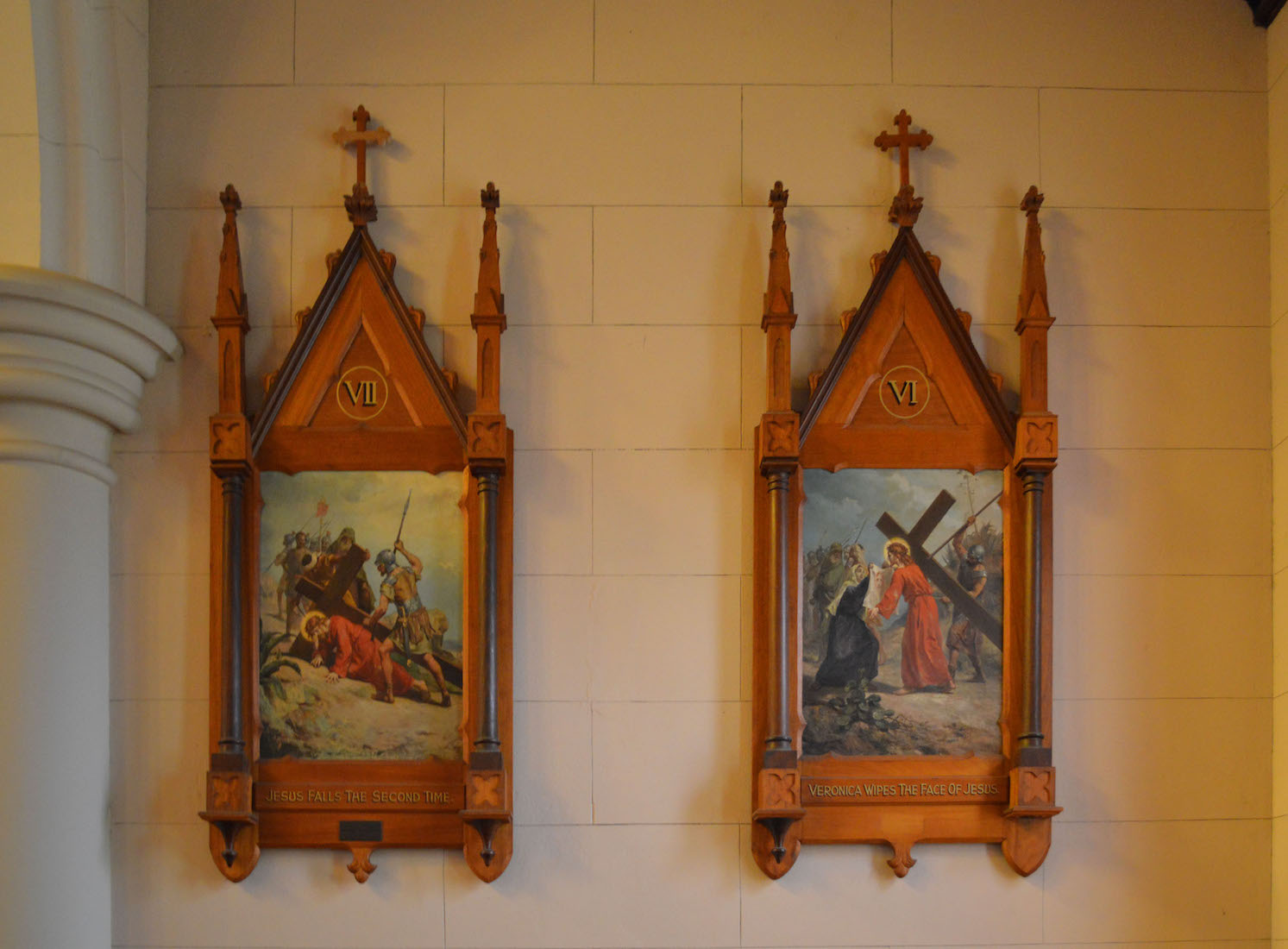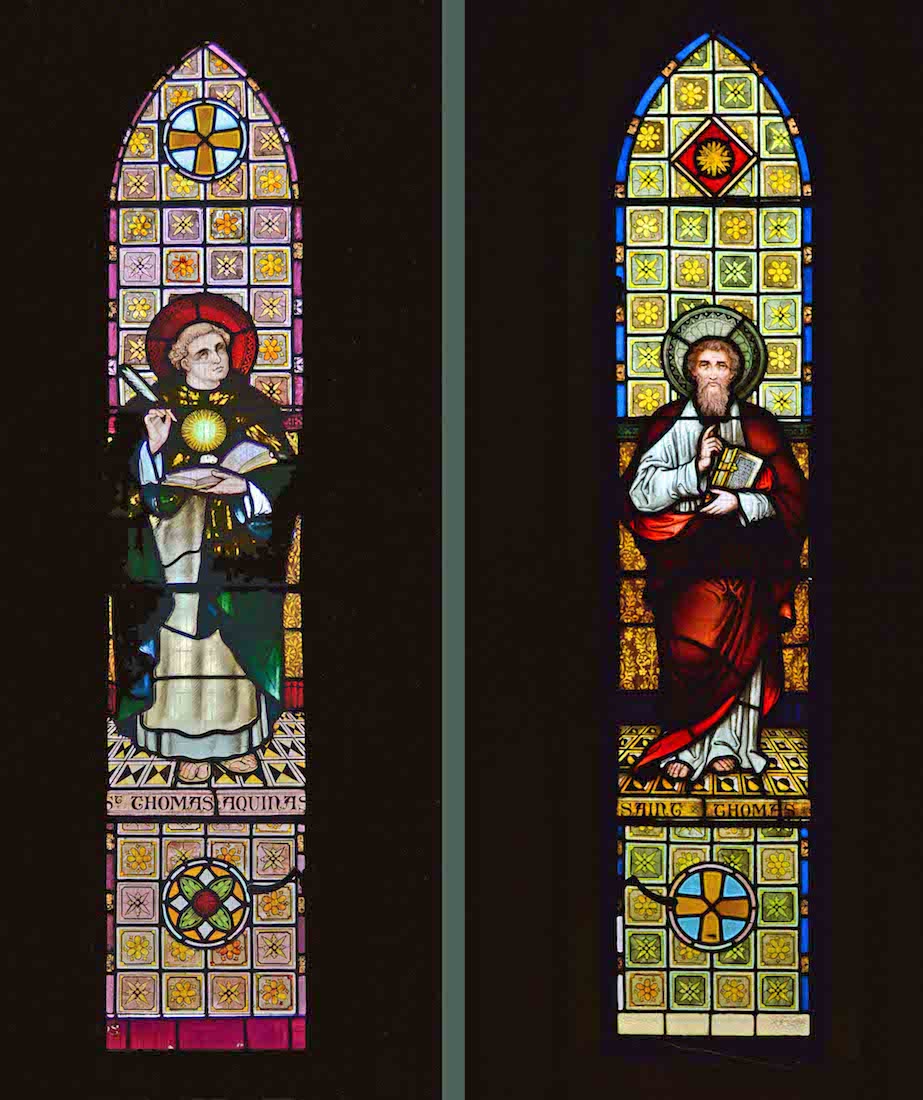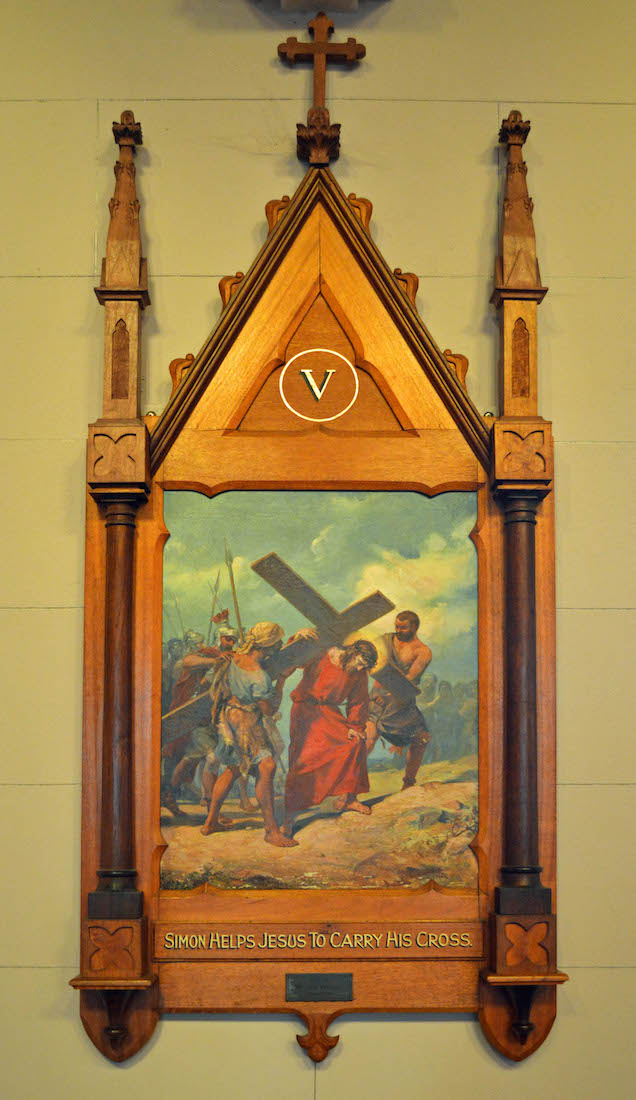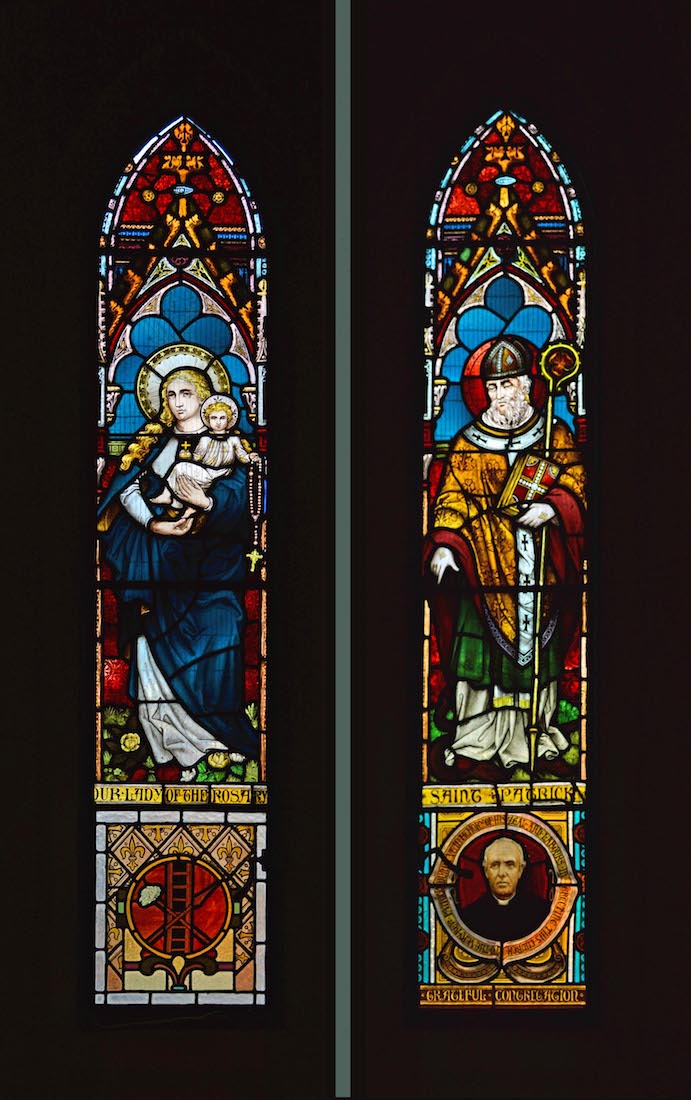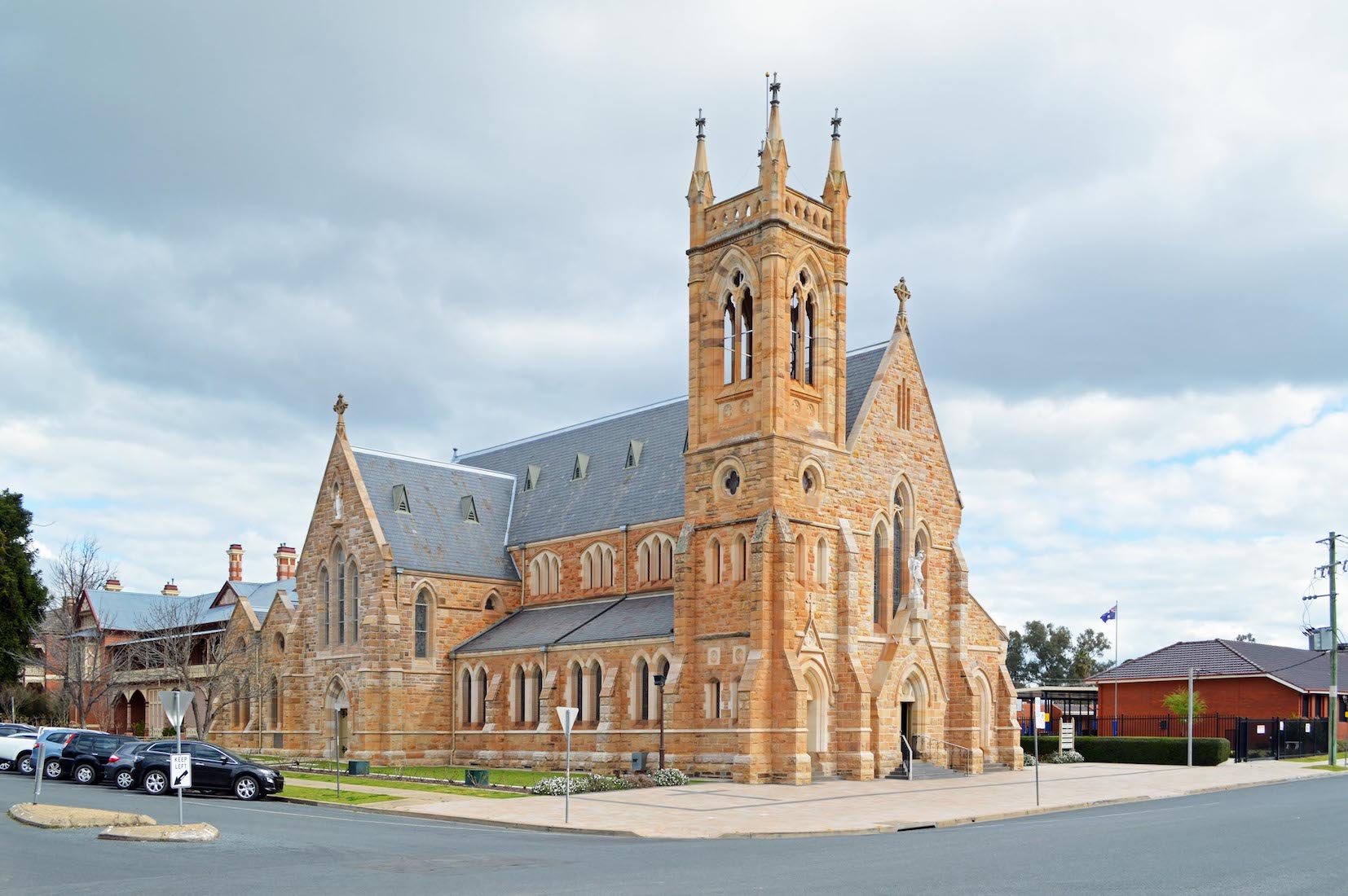
Wagga Wagga (pronounced wogga wogga) is the largest inland city in NSW, and lies on the Murrumbidgee River. St Michael’s became a Cathedral in 1918 when the Catholic Diocese of Wagga Wagga was formed, covering the district of the Riverina. INDEX
2. SATELLITE VIEW
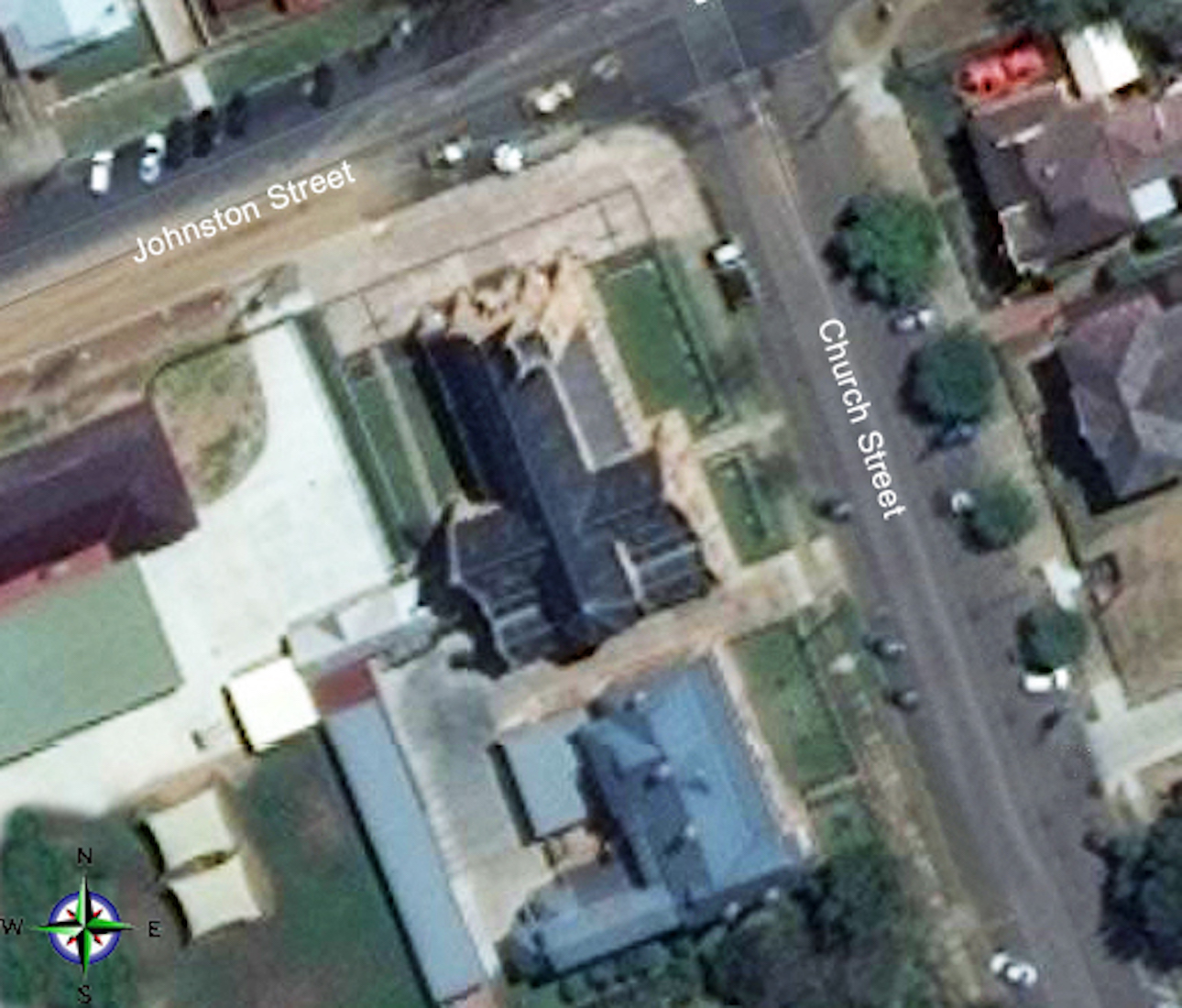
The Cathedral lies on the corner of Johnston Street and Church Street. The Cathedral is oriented with the sanctuary facing 20° east of south. As usual, we shall use liturgical directions, using East (with a capital E) to designate this direction. The Cathedral is cruciform in shape with added chapels on either side of the sanctuary. A bell tower stands at the North West corner.
3. SOUTH EAST ASPECT
St Michael's Cathedral is a large Gothic Revival styled sandstone cathedral built in two stages. The foundation stone of the first stage of the building comprising the nave and tower base, was laid on 26 April 1885.
4. SOUTH TRANSEPT
The second stage of building commenced in 1922 and was completed in 1925. The architect was W. J. Monks, and the overall construction cost was £34,894. The imposing building was constructed from Gerogery sandstone. It is one of only four Gothic sandstone cathedrals built in NSW.
5. SOUTH TRANSEPT GABLE
The South transept gable is surmounted by a budded Celtic cross. Also, high on the gable in a specially constructed niche is a white statue of Joseph and the infant Jesus. Traditionally Joseph is pictured carrying a sprig of lily – the significance comes from an old legend.
6. SOUTH EAST ASPECT
The South transept is at left, and the ‘rounded’ form of the sanctuary is clear. Of the two facing gables, the left one marks the Lady Chapel, and the right one a Cathedral vestry. The Cathedral is 128 feet long, and has width 50 feet in the aisle and nave, and 80 feet at the transepts.
7. VIEW FROM THE NORTH EAST
This is a delightful Cathedral, so attractive after recent renovations. This side is the mirror image of the South side, apart from the Cathedral tower. Again we have two facing gables: the left belonging to a vestry, and the right marking the position of the Chapel of the Blessed Sacrament. Note the foundation stone at the base.
8. FOUNDATION STONE
The Cathedral Church of the Archangel Michael ... . The date here is 1922, with the opening by Primate Rev Joseph W. Dwyer. This marks the building of the second stage of the Cathedral which was completed in 1925. Walls are rock faced ashlar, with dressed window and door surrounds and mullions.
9. THE NORTH TRANSEPT
The North transept also features a niche with a white statue – this time of the Virgin Mary in prayer.
10. THE NORTH WALL
The nave is lined on either side with lovely stained glass windows, and above is a gallery of clear clerestory windows which give light to the interior. Notice that the transept has a single Western facing lancet, and a small highlight window closest to the nave.
11. THE TOWER
The Cathedral was built with a single bell tower at the North West corner. This contains a massive tower bell weighing 17 long cwt 0 qtr 0 lb (1,904 lb or 864 kg) which was cast in the factory of Byrnes, of Dublin. The tower is 125 feet high.
12. THE WEST WALL
We have now completed our circuit of the Cathedral, and return to the West wall. Above the West doors is an imposing statue of the Archangel Michael, donated by James K. O’Reilly. Behind this is a three lancet stained glass window which unfortunately cannot be appreciated from inside: as often happened, the large organ covers it almost completely.
13. MICHAEL AND THE ENTRY
We prepare to enter the Cathedral under the gaze of St Michael. Michael is mentioned three times in the Book of Daniel, once as a ‘great prince who stands up for the children of your people’. Michael came to occupy a place in the Jewish liturgy as an advocate of the Jews. In the New Testament Michael leads God's armies against Satan's forces in the Book of Revelation, where during the war in heaven he defeats Satan.
14. THE NAVE
We enter the Cathedral and look down the nave. On either side a row of columns bearing Gothic arches, a grand timber ceiling, simple attractive sanctuary and chapels, ... . A peaceful place of worship.
15. THE NAVE ROOF
The clerestory walls are supported by round freestone columns with moulded caps and bases. The timber work of the nave is particularly fine. The word ‘nave’ has the same root as our word ‘navy’. We see the connection by noticing that the nave roof is very similar to the inverted hull of a ship.
16. NORTH WEST CORNER
Each side of the main nave is an ‘aisle’, although in fact the aisles are full of pews! The walls are mainly lined with Stations of the Cross and stained glass windows. The Stations are an aid to meditation, particularly at Easter time.
17. STATIONS VI AND VII
There are generally 14 Stations of the Cross, depicting certain incidents in the journey of Christ to the Cross. Station VI shows Veronica wiping the face of Jesus; Station VII shows Jesus falling for the second time.
18. NORTH NAVE WINDOWS I
The first pair of windows depict St Thomas Aquinas and St Thomas the disciple of Jesus. Thomas Aquinas 1225 – 1274 was an Italian Dominican friar and priest and an immensely influential philosopher and theologian. The disciple Thomas is best remembered for his doubting, referring to his disbelief that Jesus had risen from the dead (John 20:26–28).
19. STATION OF CROSS V
Station V shows Simon the Cyrenean as he was forced to help Jesus bear his cross. This story is found in Mark 15:21.
20. NORTH NAVE WINDOWS II
The next pair of windows show Our Lady of the Rosary and St Patrick. ‘Our Lady of the Rosary’ is a title of the Virgin Mary in relation to the Rosary. St Patrick is the patron saint of Ireland. He was a 5th-century Romano-British Christian missionary and bishop in Ireland, known as the ‘Apostle of Ireland’.


